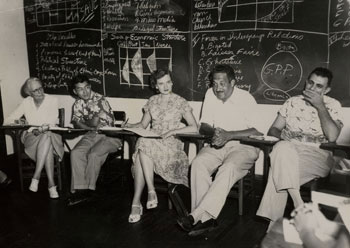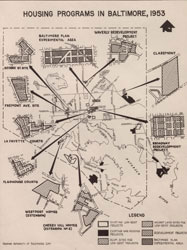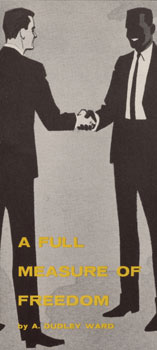Nature and Scope
 Explore three pivotal decades in the struggle for civil rights in America through the eyes and work of sociologists, activists, psychologists, teachers, ministers, students and housewives.
Explore three pivotal decades in the struggle for civil rights in America through the eyes and work of sociologists, activists, psychologists, teachers, ministers, students and housewives.
Introduction
Sourced from the records of the Race Relations Department of the United Church Board for Homeland Ministries, housed at the Amistad Research Center in New Orleans, this resource provides access to a wealth of documents highlighting different responses to the challenges of overcoming prejudice, segregation and racial tensions. These range from survey material, including interviews and statistics, to educational pamphlets, administrative correspondence, and photographs and speeches from the Annual Race Relations Institutes.
Key themes covered include:
- Desegregation of schools, industries and public transport – survey material documents the attitudes of the community towards prospective desegregation, as well as analyzing the results. The progress of legislation and legal cases can also be explored within the collection.
- Migration of African Americans from the rural South to urban centers, which had a significant impact on American industry and the labor movement, as well as domestic issues such as housing, overcrowding and poverty.
- The role of the Church in the Civil Rights Movement and in African American communities, from helping to fund organizations like the Race Relations Institute, to the part played in encouraging integration or segregation among their congregations.
- Race riots and other racial tensions, which the Race Relations Department worked to diffuse or prevent by aiding communities to identify and address their problems.
- Activities of the Civil Rights Movement, including protest marches, sit-in demonstrations, student movements, and legal cases.
Collection highlights:
- Over 100 hours of audio recordings of speeches given by prominent members of the Civil Rights Movement, including Thurgood Marshall, as well as eminent sociologists, economists and psychologists all seeking to understand and improve racial tensions.
- Photographs of the participants at the Annual Race Relations Institutes; an interracial phenomenon in the otherwise deeply segregated city of Nashville, Tennessee.
- Scrapbooks for several of the annual Institutes, collating rosters, photographs, publicity material, media coverage and key speeches.
- A wealth of survey material covering school desegregation, church integration, employment practices, housing and recreation, including interviews and raw data, and the resulting analyses, statistics and reports.
- Detailed case studies on race relations in cities such as Baltimore, Pittsburgh, Minneapolis, Trenton, Nashville, and San Francisco.
- Posters from the Cranbrook travelling exhibition, which was circulated around the country in schools, churches and civic organizations.
- Stills from two film slideshows on church integration and the work of the Race Relations Institute.
A variety of secondary features provide further tools for teaching and research:
- Interactive map allowing users to browse the extensive survey material produced by the Race Relations Department
- Data association tool to explore attendance and participation at the Race Relations Institute
- Interactive chronology, offering contextual information to support the documents
- Visual highlights gallery highlighting photographs across the key themes of the collection
- Contextual essays commissioned from academics on our editorial board
- Biographies and Thematic Guides to introduce the key figures and themes represented in the collection
- Video interviews with academics to guide users through the history of the Race Relations Department.
Language and Terminology
All editorial decisions relating to this project have been made with great care, consideration and with the utmost sensitivity.
Every care and attention has been paid to preserve the historic authenticity of these documents which range in date across the middle of the twentieth century. Any terminology that may be deemed discriminatory or offensive by present-day principles may have been preserved for the historic accuracy and relevance to that particular document.
A note on exclusions
Whilst this resource includes the bulk of the Race Relations Department records, where exclusions have been made this has largely been due to:
- Items falling outside the defined remit of this resource
- Copyright and permission considerations.



